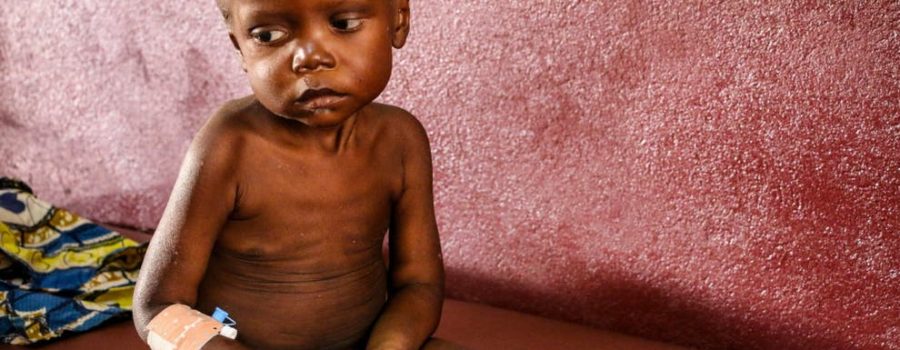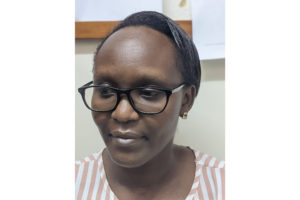The medical problems that are treated in Queen Elizabeth Central Hospital fall into two primary categories: those caused by infections and everything else. In clinical tropical medicine, the great majority of attention is focused on infectious diseases. And true, here there is a lot of tuberculosis, HIV and malaria, the most important bacterial, viral, and parasitic diseases of humankind. Additionally, there are infections many people don’t know about and are considered “neglected”: trypanosomiasis (sleeping sickness), schistosomiasis (caught while swimming in infectious waters) and hookworm, from walking barefoot in the soil.
More recently, chronic non-infectious problems that affect people in low-resource environments have raised the attention of medicine and science. Of these, malnutrition is, to me, the most tragic. An experience from my past brings feelings of sadness and anger as I think about people not having enough to eat.
Children with malnutrition fall into two major diagnostic groups: marasmus or kwashiorkor (“kwash” for short). Marasmus is caused by a lack of both protein and calories in the diet. Children are skinny, elderly looking, apathetic and weak. Those with kwash consume enough calories, but their food does not contain enough protein. The children are swollen, have edema in their hands and feet, and protuberant bellies.
It is difficult for me to reconcile that on our Earth where so many have so much, people continue to die from starvation.
My strongest memory of this problem was from 2 years ago. We were caring for a 10 month old child with cerebral malaria who was recovering, regaining consciousness and getting stronger day by day. But she was the size of a 6 month old and had marasmus. Her linear growth had suffered due to her poor nutrition. She was “stunted.” Her mother was thin, short and tiny. The mother was still exclusively breastfeeding but knew she was expressing little breast milk. The family had no food with which to supplement the child’s diet. Crying as she told us this, the mother told us the family had no land, no animals….nothing. They could not feed their children (there were others at home) or themselves. The entire family was starving to death.
There are mechanisms to battle malnutrition, both medical and through non-governmental organizations. Severely malnourished children are usually hospitalized in special refeeding units, as giving food to an intestine that is unaccustomed to it is challenging and dangerous. Many children do not survive their hospital stay. If they do, they are discharged into the care of Therapeutic Feeding Programs. If malnutrition is graded as moderate, children are treated as outpatients using RUTF (Ready to Use Therapeutic Food), the most well known of which is Plumpy Nut, a mixture of peanut butter, protein powder, and vitamins. It’s amazingly tasty and kids love it.
Our patient’s family lived in the countryside, far from a Health Centre and even farther from the hospital. The mother let us know that there were other children at home and her husband needed her to return to care for them while he sought work. She and the child could not stay in the inpatient malnutrition unit. We gathered together as many packets of Plumpy Nut as this small woman could carry, but it wasn’t going to be enough for this child, her siblings, and her parents. As they walked out of the hospital, returning to their home village, I thought about this woman, continuing her day-to-day life as she and her family slowly starved to death. How must it feel to be unable to provide one’s child with one of the basic elements of life?
Writing about her, my memories return to this mother’s face as tears welled up in her eyes. It is difficult for me to reconcile that on our Earth where so many have so much, people continue to die from starvation.






